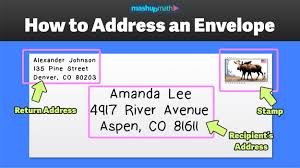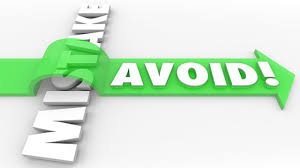How to Address an Envelope A Complete Guide for Everyone

Addressing an envelope correctly is a fundamental skill that everyone should master. Whether you’re sending a heartfelt letter, a business proposal, or an invitation to a special event, knowing how to address an envelope is crucial to ensuring your mail reaches its intended destination without delay. This comprehensive guide will walk you through the process step by step, covering essential tips, common mistakes, and best practices.
Why It’s Important to Know How to Address an Envelope
Understanding how to address an envelope is vital for several reasons. First and foremost, a correctly addressed envelope ensures that your mail is delivered to the right location. Incorrect or unclear addressing can lead to delays, returns, or even lost mail. Additionally, proper addressing is a reflection of professionalism, particularly in business settings. Whether you’re communicating with friends or colleagues, taking the time to address your envelopes correctly shows respect and attention to detail.
The Basic Components of an Envelope
Before diving into the specifics of how to address an envelope, it’s essential to understand the basic components that make up an envelope. Knowing these elements will help you format the information correctly.
Envelope Structure
- Recipient’s Address: This is the primary focus of your envelope and must be accurate and complete.
- Recipient’s full name
- Street address, including apartment or suite numbers
- City, state, and ZIP code
- Sender’s Address: This return address is placed in the upper left corner of the envelope.
- Your name
- Your street address
- Your city, state, and ZIP code
- Postage: The stamp is affixed in the upper right corner, allowing postal workers to recognize the envelope for delivery.
Understanding these components is crucial when learning how to address an envelope effectively.
Step-by-Step Instructions on How to Address an Envelope

Now that we’ve covered the basics, let’s delve into the detailed steps involved in how to address an envelope correctly.
Step 1: Choose the Right Envelope
Selecting the appropriate envelope is the first step in the addressing process. Consider the type and size of the envelope based on what you’re mailing. For letters and cards, a standard envelope will suffice. If you’re sending documents, invitations, or other items, you may want to consider padded or larger envelopes.
Step 2: Position the Envelope Correctly
Ensure that the envelope is oriented correctly. The flap should be on the top and facing you, making it easier to write both addresses clearly.
Step 3: Write the Recipient’s Address
Begin with the recipient’s name, followed by their street address. The format is essential for ensuring that the envelope is processed correctly.
- Recipient’s Name: Write the full name clearly. Avoid using nicknames unless you are sure that the recipient prefers them.
- Street Address: Include any necessary apartment or suite numbers directly after the street address.
- City, State, and ZIP Code: Make sure this information is accurate to avoid misdelivery.
Example:
Emily Carter
1234 Pine Lane
Springfield, IL 62704
Step 4: Add Your Return Address
The return address is placed in the upper left corner of the envelope. Use the same format as the recipient’s address to maintain consistency:
Example:
Michael Thompson
5678 Oak Street
Chicago, IL 60614
Step 5: Affix the Postage
Once both addresses are written, affix the stamp or postage label in the upper right corner. Ensure it is firmly attached and not overlapping any writing, which could confuse postal workers.
Step 6: Double-Check Your Work
Before sealing the envelope, double-check all details for accuracy. Verify names, addresses, and ZIP codes to prevent any issues during delivery.
Special Considerations When Learning How to Address an Envelope
When learning how to address an envelope, you may encounter specific scenarios that require special formatting or additional considerations.
International Mail
If you’re sending mail internationally, the addressing format changes slightly:
- Recipient’s Address: Write the address as you would for domestic mail but include the country name in all caps at the bottom.
Example:
Luis Garcia
Calle de la Paz 123
Madrid, 28001
SPAIN
- Return Address: Your return address should still be in the upper left corner, formatted similarly.
Business Envelopes
For business communications, it’s essential to maintain a professional appearance. Include the company name along with the recipient’s name to convey professionalism:
Example:
Dr. Sarah Johnson
ABC Medical Center
789 Business Rd
Los Angeles, CA 90001
Formal Invitations
When addressing formal invitations, such as wedding invitations, use full names and titles to show respect:
Example:
Mr. and Mrs. John Smith
123 Celebration Blvd
New York, NY 10001
Common Mistakes to Avoid

As you learn how to address an envelope, being aware of common mistakes can help you prevent issues.
Incorrect Zip Codes
One of the most frequent errors is providing an incorrect ZIP code. Always double-check this detail to ensure accurate delivery.
Incomplete Addresses
Ensure that all necessary components of the address are included, such as apartment numbers or suite designations. Incomplete addresses can lead to confusion and delays.
Misplaced Stamps
The postage stamp must be placed in the upper right corner. Misplacement can lead to complications in mailing and might result in your envelope being returned for insufficient postage.
Additional Tips for Addressing Envelopes
To refine your skills in how to address an envelope, consider these additional tips:
Use Clear, Legible Writing
Always use clear and readable handwriting. Black or blue ink is preferable, as it provides good visibility against the envelope background. Avoid using cursive fonts that may be hard to read.
Consider Using Address Labels
For those who frequently send mail, consider using address labels. They save time and add a neat, professional touch to your correspondence.
Handwriting vs. Typing
Typed addresses are perfectly acceptable, especially for business mail. However, handwritten addresses can add a personal touch, particularly for personal letters and invitations.
Practice Regularly
The more you practice how to address an envelope, the better you will become. Try addressing various envelopes for different occasions to build your confidence and skills.
Understanding Envelope Etiquette
Mastering how to address an envelope also involves adhering to etiquette guidelines. Here are some important points to consider:
Use Titles and Honorifics
When addressing formal communications, always use the appropriate titles such as Mr., Mrs., Dr., or Ms. This shows respect for the recipient and maintains a formal tone.
Avoid Abbreviations
When addressing envelopes, avoid abbreviations for state names. Write out the full state name to prevent any confusion.
Align Text Properly
Keep your text left-aligned and consistent. This not only looks neat but also helps postal services process the envelope more efficiently.
Handling Special Situations
Certain scenarios may require you to adjust your approach when learning how to address an envelope.
Sending to Organizations
When addressing an envelope to an organization, include the organization’s name along with the recipient’s name:
Example:
Ms. Sarah Brown
Community Outreach Coordinator
Helping Hands
100 Hope Street
Atlanta, GA 30303
When the Recipient Is Unfamiliar
If you are sending mail to someone you do not know well, it’s wise to include a formal title and avoid casual language. This maintains professionalism and respect.
The Role of Technology in Addressing Envelopes
In our digital age, technology has transformed how we address and send mail. Here are some ways technology can assist you in how to address an envelope:
Address Verification Tools
Many online tools can help you verify addresses before sending. This ensures that your information is accurate and up-to-date, minimizing the risk of misdelivery.
Online Printing Services
Various online services allow you to create and print custom address labels and envelopes. This can make the process faster and more efficient, especially for bulk mailing.
Email Alternatives
While physical mail remains valuable, consider whether an email might suffice for quick communications. However, for formal or significant messages, traditional mail is often preferred.
The Psychology Behind Addressing an Envelope
Understanding how to address an envelope also involves recognizing the psychological aspects associated with mailing. The presentation of your envelope can create an impression before the recipient even opens it. A well-addressed envelope conveys professionalism and respect, while a poorly addressed one may give the opposite impression.
The Impact of Presentation
The way you address an envelope can set the tone for the entire correspondence. For instance, a beautifully crafted invitation with elegant calligraphy can enhance the excitement of a wedding invitation. Conversely, a hastily addressed envelope may suggest a lack of importance or effort.
Also read Darío Sepúlveda A Comprehensive Exploration of His Life and Impact
Conclusion
In conclusion, mastering how to address an envelope is an essential skill that enhances communication and ensures that your mail reaches its intended destination. By following the detailed steps and tips outlined in this guide, you can ensure your envelopes are addressed correctly and professionally.
This knowledge will not only improve your mailing experience but also reflect positively on you, whether you’re sending personal letters, business correspondence, or invitations. With practice and attention to detail, you can become proficient at this vital skill, ensuring that your mail arrives at its destination without any issues.
Take the time to apply what you’ve learned about how to address an envelope. With careful attention and practice, you’ll find that addressing envelopes becomes a simple and efficient task, allowing you to focus on the content of your messages and the connections you make through them.







